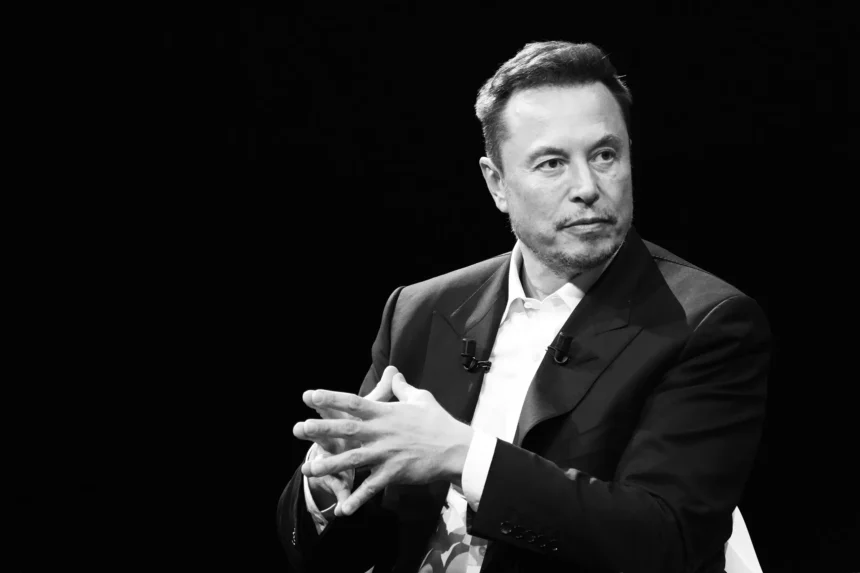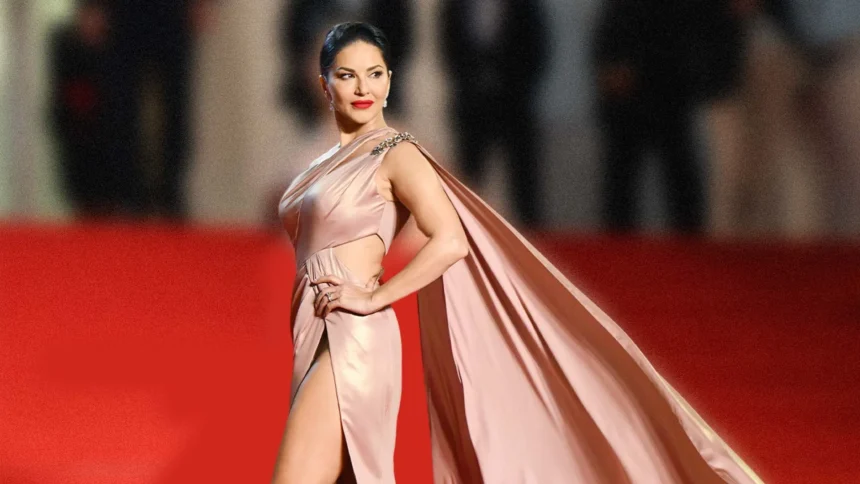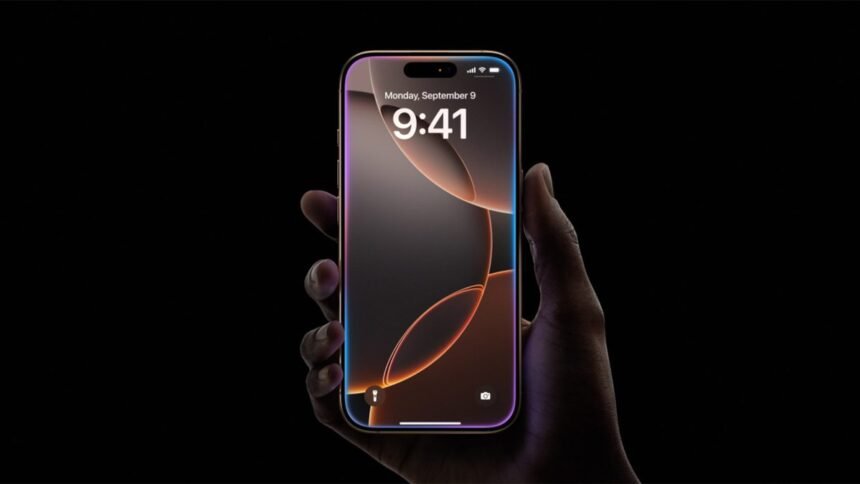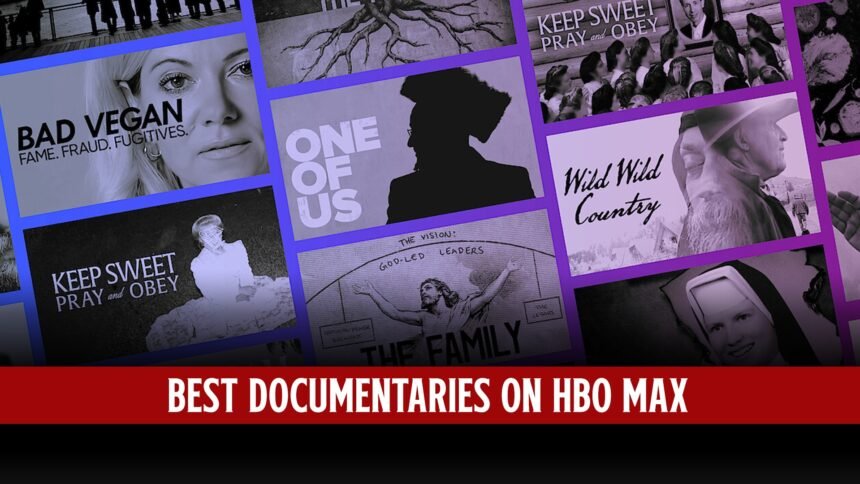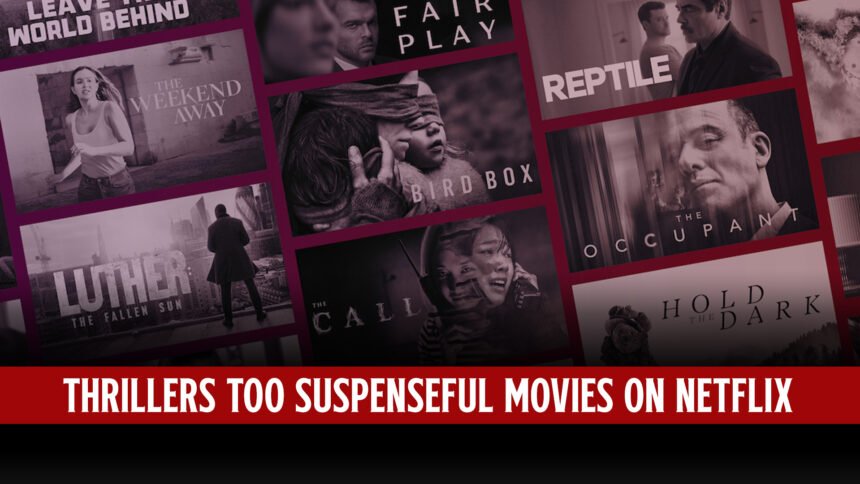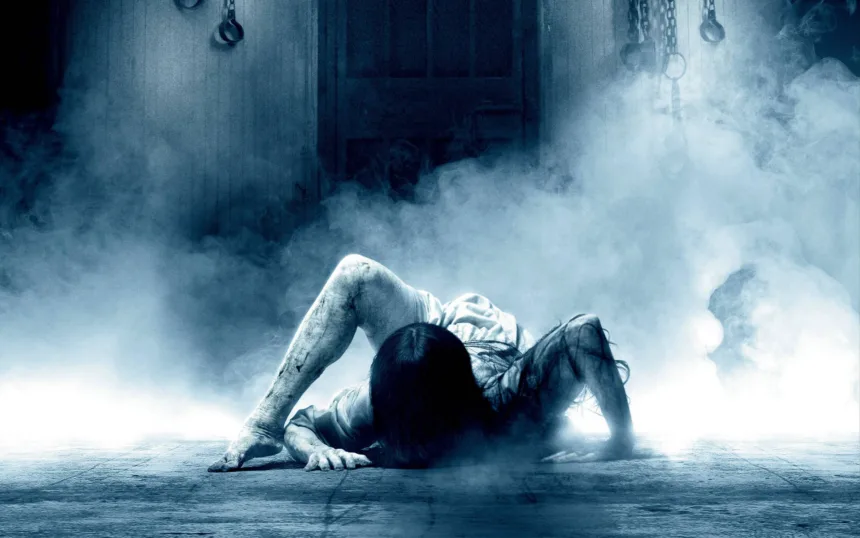Considering the quality of offerings from Netflix in 2023, it rapidly becomes clear that their horror collection needs to be more stable. As rival services, exclusively genre-specific ones such as Trembling, continue to expand their best horror movies on Netflix, it’s harder and harder for Netflix to plan any sense of all-inclusiveness, and its library becomes more static and needful upon Netflix Originals monthly. For example, at several points in the last few years, Netflix could boast movies.
Best Horror Movies On Netflix
Check out our shortlisted top 10 best horror movies on Netflix hereunder and make your weekend scary.
1. Get Out – 2017
2. His House – 2020
3. The Haunting of Hill House – 2018
4. Us – 2019
5. Cabinet of Curiosities – 2022
6. Gerald’s Game – 2017
7. Apostle – 2018
8. The Platform – 2019
9. Cargo – 2018
10. Under the Shadow – 2016
1: Get Out – 2017
Peele’s a natural behind the camera, but Get Out benefits most from its dishonestly trim premise, a ease that belies rich thematic depth. Chris (Daniel Kaluuya) and Rose (Allison Williams) go to spend a weekend with her folks in their lavish upstate New York mansion, where they’re throwing the annual Armitage bash with all their friends in attendance. Chris instantly feels out of place; events intensify from there, taking the narrative in a ghastly direction that ultimately ties back to the unsettling sensation of being the “other” in a room full of people who aren’t like you—and never let you forget it. Put indelicately, Get Out is about being black and fenced by whites who squeeze your biceps without asking, fetishize you to your face, and analyze your blackness as if it’s a fashion trend. At best, Chris’s ordeal is strange and dizzying, the kind of thing he might bitterly chuckle about in remembrance. At worst, it’s a setup for such ghoulish developments in the horror domain. That’s the finest of lines Peele and Get Out walk without faltering.
2: His House – 2020
Movies that hold back on terror are the best at sucking the life force out of horror. Movies can frighten audiences in a variety of ways, but a horror film at the very least has the potential to be frightful rather than frivolous. His House by Remi Weekes doesn’t mess around. Within ten minutes of the film’s disastrous start, the director out-grudges The Grudge by strategically scattering ghosts so that his actors can trip over them on the stairs and the floor. In the end, this film is about the inescapable pain that immigrant stories have by nature. It is a companion piece to recent indie films like Mediterranea by Jonas Carpignano, which depicts the perils immigrants face on the road and at their destinations with ruthless neorealist realism. Weekes is deeply invested in Bol and Rial as people, where they come from, what led them to leave, and most of all, what they did to leave. But Weeks is similarly invested in making his viewers leap from their skins.
3: The Haunting of Hill House – 2018
The Haunting of Hill House succeeds as both a skillful adaptation of Shirley Jackson’s iconic novel and as horror television because of its striking visuals. Off-screen, scarcely visible, or obscured by darkness are the monsters, ghosts, and objects that collide on the wall. The series even refers to some of the camera movement and shot design choices from the original film adaption in order to create unease and inconsistency. Maybe “inconsistency” isn’t the right word here. When you watch it, your mind is the only thing that seems inconsistent because you are constantly on the lookout for tricks but are frequently fooled by the way the scenes are put together. By acceptance the squirm—and the time necessary to get us to squirm rather than jump—The Haunting of Hill House is great at creating troubling situations and even better about letting us marinate in them.
4: Us – 2019
Us explains what Get Out implies. Even after only two films, Jordan Peele’s filmmaking seems preconfigured for accuracy, the Hitchcock comparisons just sitting there, waiting to be shoved between commas. At the same time, Peele openly speaks and acts in allusions. Us, like Get Out before it but more, wastes nothing: time, film stock, the similarly precise abilities of his actors and crew, real estate in the frame, a chance for a gag. Suppose his films are the sum of their effects. That means he’s a smart filmmaker with many ideas, someone who knows how to hone those ideas into stories that never bloat. However, he’s fearless to confound his audience with explanation or take easy shots—like the film’s final twist—that swell and grow in the mind with meaning the longer one tries to insist, if one were inclined to do so, that what Peele’s doing is easy at all. A family comedy studded with dread, then a home incursion thriller, then a head-on sci-fi horror flick, Us quickly acquaints us with the Wilson family: calming matriarch Adelaide (Lupita Nyong’o), gregarious dad Gabe (Winston Duke), daughter wise beyond her years Zora (Shahadi Wright Joseph) and adorable epitome of the innocent younger brother, Jason (Evan Alex). Though far from shallow, the characters take on archetypal signifiers, whether it’s Zora’s penchant for running or Gabe’s big guy whose bulk betrays a softer heart, Peele never spoonfeeding cheap characterizations but just getting us on his wavelength with maximum efficiency. Us isn’t openly about race, but it is about humanity’s intrinsic knack for Othering, for boxing people into narrow perspectives and then holding them responsible for everyone vaguely falling within a Venn diagram. Regardless of how sufficiently we’re able to parse what’s going on (and one’s inclined to see the film more than once to get a grip), the images remain, stark and hilarious and horrifying: a child’s burned face, a misfired flare gun, a cult-like spectacle of inhuman devotion, a Tim Heidecker bent over maniacally, walking as if he’s balanced on a thorax, his soul as good as creased. Divorced from context, these moments still speak of absurdity—of witty one-liners paired with mind-boggling horror—of a future in which we’ve so alienated ourselves from ourselves that we’re bound to cut that rope that keeps us together, sooner or later, and completely unravel. We are our undoing. So, let the Hitchcock comparisons come. Peele deserves them well enough. Best not to think about it too hard, to not ruin a good thing, to demand that Us be anything more than sublimely entertaining and wonderfully thoughtful, endlessly disturbing genre filmmaking.
5: Cabinet of Curiosities – 2017
In first approaching Netflix’s new Cabinet of Curiosities, it’s natural to wonder how much of a Guillermo del Toro project this is. The horror anthology series is volunteered by the streaming service as “a collection of the Oscar-winning filmmaker’s personally curated stories, described as both equally sophisticated and horrific,” and del Toro steps into the host role himself, pulling forth trinkets from the titular cabinet to introduce each tale. But can the actual segments stand up to their association with a beloved director? Are the two episodes that GDT had a hand in writing enough to put his stamp on the series? And can the artistry of those other episodes reflect a similar level of virtuosity?
To get right to the point, I needn’t have worried. Cabinet of Curiosities is a genuinely gorgeous collection of tales featuring some of the most impressive visuals, production design, and general cinematic craftsmanship seen in the streaming world in recent memory. Its tales are often conventional, but they succeed through sheer filmmaking talent and professionalism, guided by the hands of some of the genre’s best talents. This is the rare case where an anthology series can tell me that the luminary of a host/producer personally approved the output of all of these filmmakers, and I truly believe it. Watching these episodes, I can imagine Del Toro smiling in approval.
6: Gerald’s Game – 2017
Director Mike Flanagan’s Gerald’s Game trims fat condenses, and slims, stripping away some of the odder quirks of Stephen King’s novel to get at the heart of themes underneath. The result is a tense, effective thriller that highlights two strong actors (Bruce Greenwood and Carla Gugino) in an unfettered celebration of their craft. This is nothing new for Flanagan, whose recent output in the horror genre has been commendable. It’s hard to overlook some of the recurring themes in his work, beginning with 2011’s Absentia and through the wildly imaginative Oculus, Hush, and Ouija: Origin of Evil. Every one of these films centers around a strong-willed female lead, as does Gerald’s Game. Is this a coincidence? Or is the director drawn to stories that reflect the struggle of women to claim independence in their lives by shedding old scars or ghosts, be they literal or figurative? Either way, it made Flanagan an obvious fit for Gerald’s Game. This unassuming, overachieving little thriller is blessed by two performers capable of handling the lion’s share of its dramatic challenges.
7: Apostle – 2018
Apostle serves as the wider world’s introduction to the visceral filmmaking stylings of Welsh filmmaker Gareth Evans, who had already established himself as a legendary figure among fans of action movies thanks to the first two The Raid films. When compared to his other films, which are as near to a big-screen Streets of Rage adaptation as you’re ever going to find, Apostle appears to be Evans’ attempt to establish himself as a respected director and maestro of visual art. In order to accomplish this, he ventured into a well-trodden territory in the shape of the rural “cult infiltration movie,” which inevitably drew comparisons to films like The Wicker Man (or even Ti West’s The Sacrament).
By sheer style and vigor, Apostle manages to enter the year-end discussion among the finest horror films of 2018. From the ominous arrival of Dan Stevens’ smoldering character at the island cult facility to the delightfully icky Grand Guignol of the third act, where viscera flows with hedonistic abandon, every frame is masterfully constructed. Before letting the blood dams burst, Evans understands just how long to prick the audience with a slow-burning mystery. His finale embraces supernatural madness and uncomfortable genuine human violence. The Raid’s precise warfare has been supplanted by a clumsier kind of wanton violence that is motivated by desperation rather than honor. Evans comes to the obvious conclusion that this kind of violence is much more terrifying.
8: The Platform – 2019
The Platform benefits immensely from the strength of its simple, high-concept premise and all the extra information that is withheld from the viewer. It doesn’t matter that we don’t know why exactly people are placed into this sinister, vertical prison structure, in which the only sustenance arrives once a day in the form of a steadily descending, increasingly gross stone slab piled high with perishables. Nor do we need to know how this apparent social experiment operates. However, the repeated glimpses we get of cooks slaving over perfect dishes to be sent down to the doomed convicts are no doubt designed to needle our curiosity. What matters is that we observe the differences in human reaction to this plight—how different personalities react to adversity with an “us or them” mentality, a predatory hunger, or a spontaneous drive toward self-sacrificing altruism. The fact that the position of the prisoners is constantly in flux is key—it gives them both a tangible reason to be the change they want to see in their world and an almost impossible temptation to do the exact opposite out of distrust of their neighbors. One expects a nihilistic streak here, and you won’t be disappointed—but a few glimmers of hope also shine through the cracks. Just enough, perhaps, to twist the knife that much deeper.
9: Cargo – 2018
We’ve had enough takes on worldwide zombie apocalypses to last undead enthusiasts long through a worldwide zombie apocalypse. Of those takes, few are inspired, a few more are watchable though skillful, and most are dreck, whether in TV or movie form. Cargo, a collaborative directing effort between Yolanda Ramke and Ben Howling, falls somewhere in between “inspired” and “workmanlike,” which is to say it’s well worth seeking out on Netflix if you have a powerful need to watch twitching, walking corpses menace a family trying to survive while isolated in Australia’s Outback. Martin Freeman plays Andy, a stubborn husband to his wife, Kay (Susie Porter), and a loving dad to their daughter, Rosie; he’s piloting a houseboat to safer shores, or that’s the hope. Then Kay takes a zombie bite, forcing a change of plans and setting them down the path to ruin and tragedy. For a certain kind of horror purist, Cargo denies the expectations of the genre. It’s not an especially scary movie. It is, however, a moody, atmospheric movie, replacing scares with a nearly overwhelming sense of sadness. If that’s not enough for you, then at least be satisfied by the excellent FX work. Here, zombies present as victims of debilitating illness: A waxen, carious fluid seeps from their eyes and mouths, which is suitably nauseating instead of workaday splatter. All the same, Cargo is never half as stomach-churning as it is simply devastating.
10: Under the Shadow – 2016
Babak Anvari spends the majority of the movie creating an oppressive period drama, a different kind of horror movie that vividly depicts Iran’s claustrophobia during its turbulent post-revolutionary period. Anvari has created Under the Shadow as a declaration of disobedience and a tribute to his mother, who was a member of a family that eventually fled the Ayatollah’s tyranny. Shideh (Narges Rashidi) is shown as the brave heroine battling back against more powerful adversaries in this distinctly feminist movie. In this situation, this archetype from horror films gains even greater impact. It’s nearly as moving to see Shideh defeat her demons by shielding her child from a more literal devil as it is to see her reject the Khomeini regime by watching a Jane Fonda exercise video that the government forbade.
